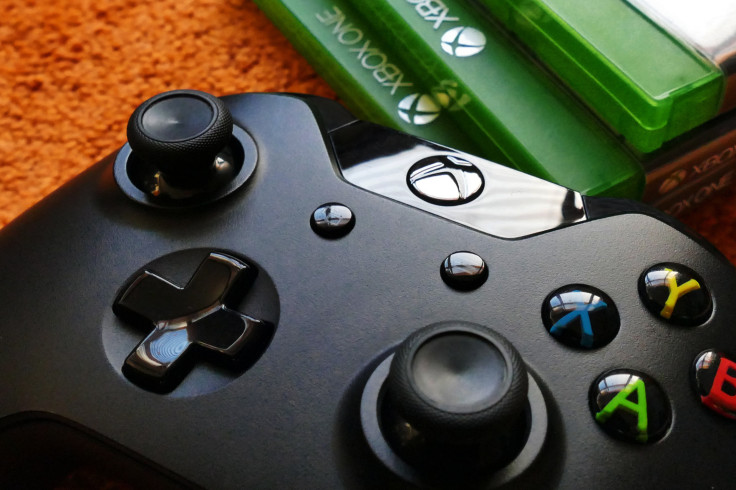Microsoft's New Xbox Milk Pitcher Joins a Long Line of Bizarre Creations: Here Are 5 of the Weirdest
The Xbox Milk Pitcher follows in the footsteps of items like the Xbox Mini Fridge and the Series S Toaster

Tech giant Microsoft known for its gaming consoles has pulled back the curtain on an Xbox-branded milk pitcher. This latest reveal adds to a rather curious collection of unconventional merchandise and creations from the company.
Microsoft keeps blending the world of gaming with everyday household items. Xbox Canada has introduced a surprising new home essential: an Xbox-branded milk pitcher following a trend set by previous releases like the Xbox Mini Fridge and the Xbox Series S Toaster, which famously imprints the Xbox logo onto your toast.
Xbox's Latest Quirky Creation: The Milk Pitcher
Inspired by the Xbox Series X, the new milk pitcher is available in either white or black and can reportedly hold up to 1.3 litres of liquid. Xbox Canada playfully hinted at its arrival on X, noting, 'Hydration or calcium is key to staying on top of your game.'
Introducing the Xbox Milk Pitcher because hydration or calcium is key to staying on top of your game 🎮🥛 pic.twitter.com/3bRrjtSGNM
— Xbox Canada (@XboxCanada) June 1, 2025
Unexpectedly Odd Microsoft Products You Likely Missed
It remains uncertain whether this is a genuine product release or merely a clever marketing move, as no official announcement has yet been made, per HypeBeast. Regardless, it is a fresh reminder that the Xbox Milk Pitcher is far from the only unusual item to emerge from Microsoft's creative labs.
The tech giant has a history of developing truly peculiar products. Here are five of the weirdest:
1. Microsoft Bob
The concept of a straightforward operating system interface may seem rather old-fashioned today, but in March 1995, Microsoft believed this was exactly what users needed. This led to the introduction of Microsoft Bob, widely considered one of the company's most significant missteps.
Microsoft Bob (1995), when we confused familiar UIs as intuitive UIs pic.twitter.com/C5QuUg5gLj
— Retro Tech Dreams (@RetroTechDreams) December 12, 2022
Microsoft Bob aimed to simplify the Windows 3.1 interface by transforming it into a cartoon house that users could explore like an adventure game. Clicking various objects would launch their corresponding programs, and you could even personalise these rooms by adding new items, essentially creating shortcuts.
Bob even featured a virtual companion named Rover, who would offer guidance and help you navigate the house, foreshadowing the well-known Office Assistant, Clippy.
2. Microsoft EasyBall
Bob wasn't Microsoft's sole endeavour to make computing accessible for children in the mid-nineties. The company also launched the Microsoft EasyBall, which was released in 1995. This pointing device, created for children aged two to six, was a large yellow ball within a beige plastic frame.
The EasyBall simplified navigation, letting kids control an on-screen cursor without needing to move a mouse physically. It was a straightforward device, lacking right-click functionality, but this was probably not a major concern for its intended users.
Microsoft EasyBall??? pic.twitter.com/7DbRmZ1R7A
— Dizzy Ziddy (@dizzy_ziddy) May 12, 2018
Parents who bought an EasyBall for their children received more than just the device. Microsoft also included child-oriented software with the pointing device. A 1995 advertisement shows the EasyBall bundled with Microsoft Explorapedia: The World of Nature, while an archived version of Microsoft's old Microsoft Hardware website indicates it also came with two games.
3. Microsoft ActiMates
The EasyBall wasn't Microsoft's only product aimed at children in the mid to late 1990s. This period also saw the introduction of Microsoft ActiMates, a series of interactive plush toys developed in partnership with PBS, which granted Microsoft licenses to several popular children's television programmes.
Barneyを知ってる人は少数派になりつつありますが、これがMicrosoftのActiMatesと言うオモチャである事を知ってる人もかなり少数派ですね。 pic.twitter.com/eK9nAjoJlk
— JO1LNK/サイタマAD966 (@toba966) April 21, 2019
Microsoft introduced the ActiMates line in 1997, beginning with a plush toy of Barney, the most famous purple talking dinosaur from the 1990s. The main appeal of the Barney plush toy was its ability to interact with television programmes or video games, offering praise to children for finishing tasks in a game or asking questions related to the Barney episode they were watching.
4. Microsoft Comic Chat
Looking back at Microsoft in the 1990s is quite fascinating. The decade saw industry-defining, business-focused moments, such as the mid-decade arrival of Windows 95, which transformed how most of us used computers. Yet, there were also quirky experiments like Comic Chat, which the company introduced in 1996.
Do you remember Microsoft Comic Chat? pic.twitter.com/ybGg4giFh2
— Cama Fox 🦊🏳️⚧️ (@cama_fox) April 19, 2023
By 1996, online conversations were far from a new concept. Systems like Usenet, which first appeared in 1979, even before the internet became what it is today, and Internet Relay Chat (IRC), established in 1988, had long allowed people to communicate digitally.
Microsoft wasn't truly breaking new ground by letting users chat over the internet. What made its offering unique, however, was the format: comics.
5. Microsoft Kin
The mid-to-late 2000s marked an exciting technological period, especially concerning mobile communication. Apple's iPhone, released in 2007, fundamentally changed the mobile phone landscape, while the rise of a phone-centric generation highlighted a new and profitable market: the 'wireless youth.'
As expected, Microsoft sought to establish itself in this expanding sector. Still, its endeavour ultimately led to the infamous failure known as the Microsoft Kin. Microsoft's Kin comprised two feature phones, the Kin One and Kin Two, launched in partnership with Verizon.
you haven't lived until you've held a Microsoft Kin in your hand. pic.twitter.com/uCX7jyu440
— Victor White (@VictorWhite) May 2, 2024
Both models were designed as BlackBerry Slider-style phones, featuring 2.7-inch or 3.5-inch screens and a physical keyboard that emerged from beneath the display. Regrettably, for Microsoft, the Kin proved to be an utter failure.
The Quirky Legacy Continues
And there you have it – a look back at some of Microsoft's more eccentric ventures, from an ill-fated operating system companion to a toaster that brands your breakfast. While the Xbox Milk Pitcher might seem unusual, it certainly fits into a long and curious history of the company's unexpected creations. It just goes to show that even tech giants have a playful and sometimes perplexing side!
© Copyright IBTimes 2025. All rights reserved.





















